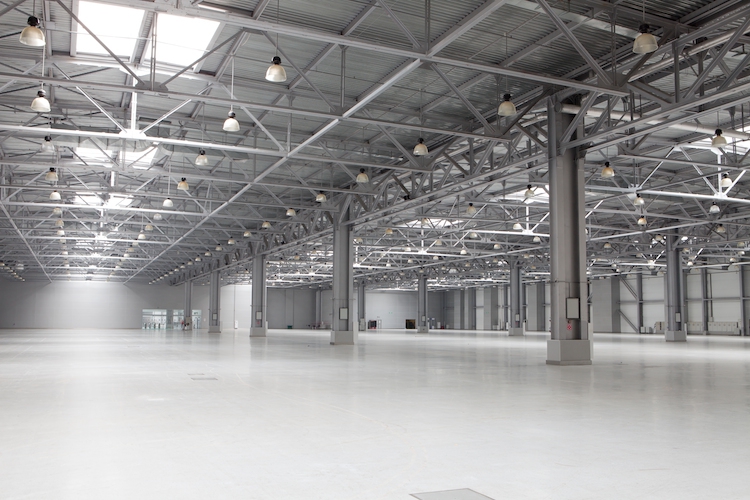
Five ways industrial lighting can play a key role in IIoT
July 15, 2016
By Rizwan Ahmad Dialight

Jul. 15, 2016 – Industrial Internet of Things (IIoT) technology is becoming increasingly pervasive across every type of manufacturing, production and distribution sector. Companies are connecting equipment, machinery, assets and even office equipment and supplies to monitor, track and gather intelligence across all aspects of the business with the ultimate goal of using this insight to improve production and operational efficiency and reduce waste.
One of the most exciting new ways to enhance any IIoT program is to incorporate facility lighting. In fact, many facilities are surprised to learn that integrating lighting into their IIoT offers features and benefits far beyond simply monitoring and controlling the lights themselves. It can actually extend functionality across a range of other areas and applications to simplify automation and maximize ROI facility-wide.
Here are five important considerations that make integrating your lighting network into your IIoT system worthwhile.
1. Lighting is an operational necessity, but it must be reliable. The fact that conventional lighting maintenance is a constant chore is a huge burden for some companies, so first and foremost, facilities must implement a cost-effective, highly-efficient and exceptionally reliable lighting system. LED lighting has emerged as the most dependable and maintenance-free solution on the market, and this is especially true for lighting manufacturers that prioritize quality, and design and build their own components in-house specifically for industrial lighting applications. It’s important to note that fixture reliability isn’t solely dependent upon the LEDs themselves, but on the entire system, including the power supplies and other components. For companies looking to step up their IIoT and automation programs to include lighting, it’s critical to find a lighting supply partner that offers the industry’s leading longevity and reliability across the entire fixture, otherwise there’s no point even talking about controls.
2. Gain direct access to individual fixtures. Some lighting systems provide controls to adjust functionality across groups or banks of lights. This reduces burn time by allowing groups of lights to be turned off or on as needed, eliminating wasted energy. Motion detectors or occupancy sensors — and even daylight harvesting sensors that adjust lighting output in response to natural light — can be implemented to further improve efficiency. However, controlling groups or banks of lights only goes so far — you may still find light and energy are being wasted. The most advanced systems enable access to each individual fixture, providing more granular and detailed monitoring and control to maximize efficiency. Look for a system that offers this level of detailed control capability at the individual fixture level for optimal ROI.
3. Connectivity with industrial automation or Building Management Systems (BMS) is important. Implementing a lighting control system that provides a dashboard interface to monitor and control fixtures remotely from a user control panel application is a must to get the most from your lighting investment. However, the best systems can take that one step further, integrating seamlessly with existing industrial automation or building maintenance platforms you’re already using. Not only does this simplify monitoring, management and maintenance, but it also enhances the ROI of both the automation and lighting systems.
4. Your lights should multitask to maximize ROI. Since lighting is so ubiquitous and modern, LED fixtures already include built-in wireless nodes that could be used to perform jobs beyond illumination. For example, Wi-Fi signal boosters could be incorporated to enhance connectivity in dead zones throughout the facility. Or, lighting can be used to collect data from operation, environmental and power conditions. For example, sensors in the lights could provide data about temperature, humidity and other conditions, and visual sensors could even be added to track inventory of product, raw materials or consumables to aid in supply chain management and production.
5. Li-Fi is the next frontier. Li-Fi, a wireless technology that uses the visible light spectrum to transmit data, shows tremendous promise for making things like conventional Zigbee, Wi-Fi and Bluetooth obsolete, eliminating the need for these additional systems and components. The idea of the lights not only providing illumination, but also serving as the data network to transmit not only their own performance information but also backhaul all kinds of other data, is an exciting prospect, and not too far off on the horizon. With Li-Fi, you get the ultimate return on investment — not only the best in visibility and clarity, but also a ready-made system for gathering and integrating a wide range of intelligence into a centralized system for analysis to improve operations performance and productivity.
When most people think of IIoT, they think primarily of direct production-related equipment — the machinery and systems that actually do the work of the facility. Lighting is mostly considered a necessary evil — a costly and often high-maintenance system that is required in order to get the job done. However, with modern, high-efficiency LED lighting fixtures and the addition of advanced lighting controls and other onboard technologies, lighting can transform from a high-maintenance cost centre to a critical operational component that contributes directly to production efficiency, output and the bottom line.
Rizwan Ahmad is the vice-president of engineering and technology at Dialight.
Advertisement
- Feds to invest nearly $5M in 11 Quebec aerospace firms
- In the blood: Following in our fathers’ footsteps